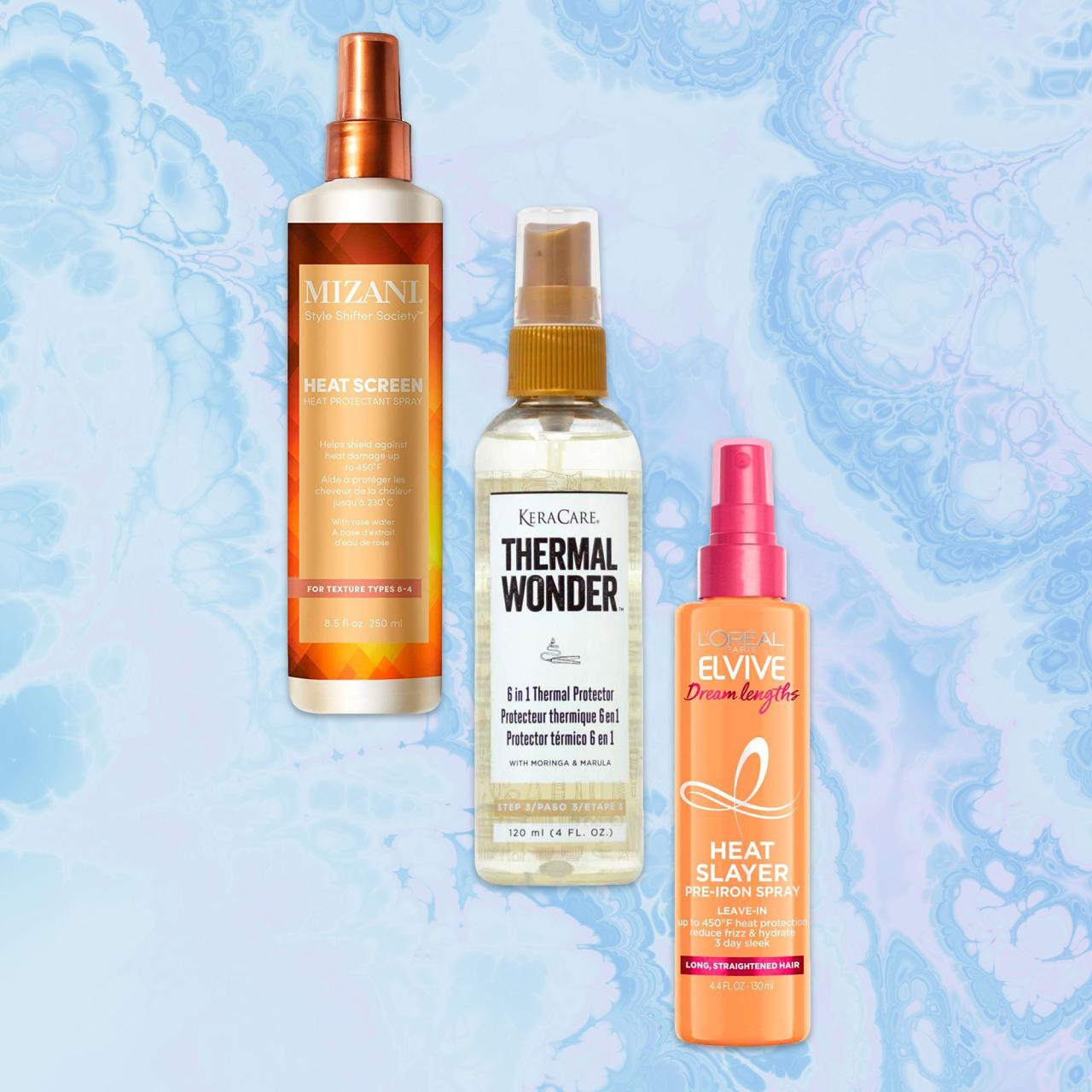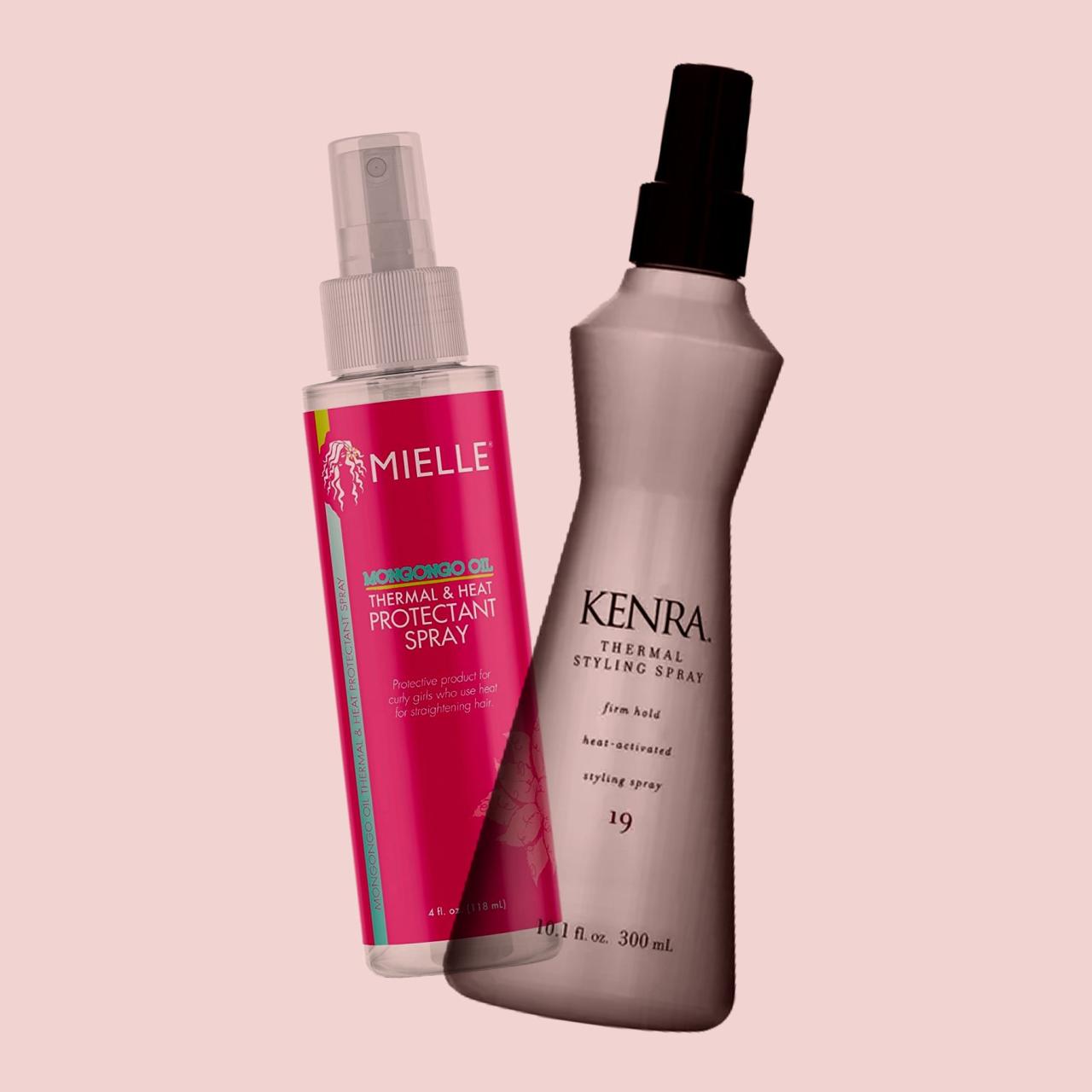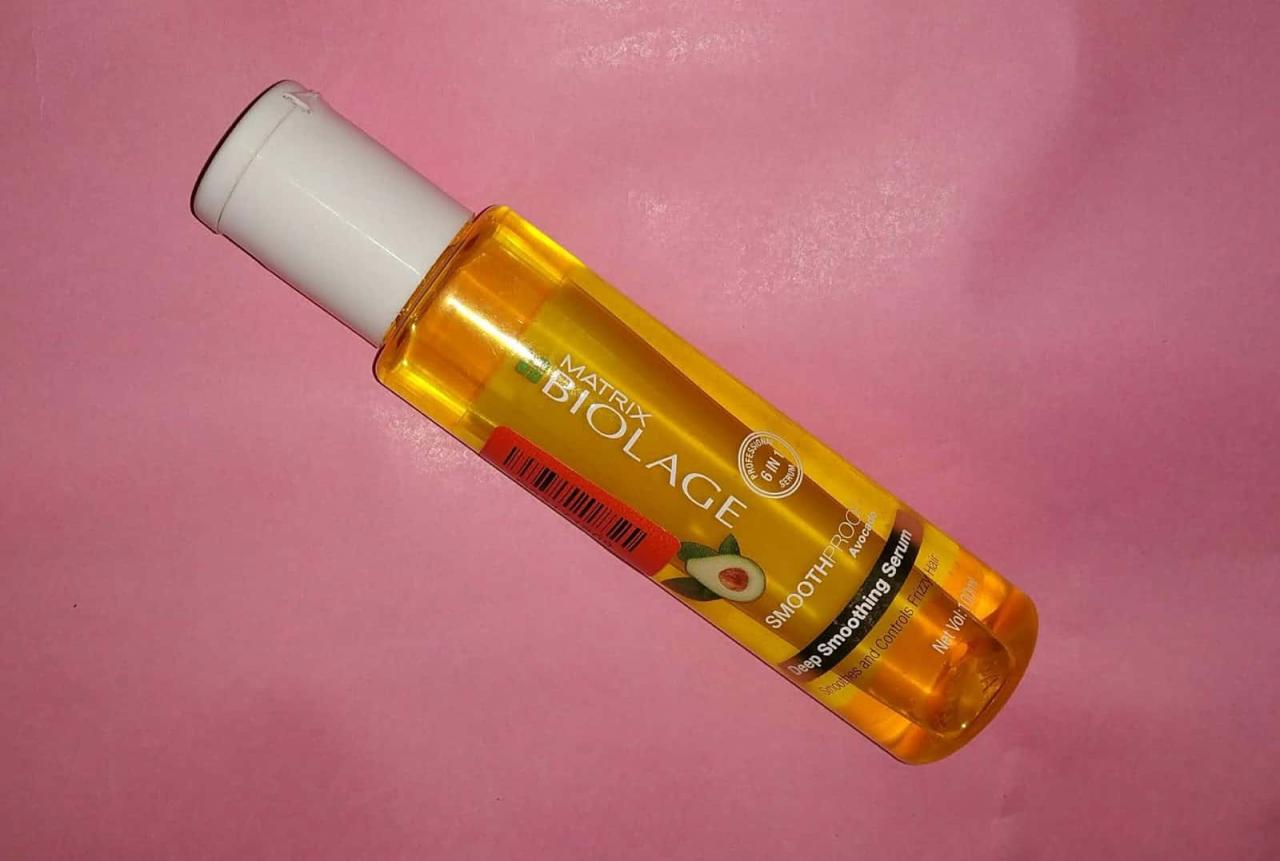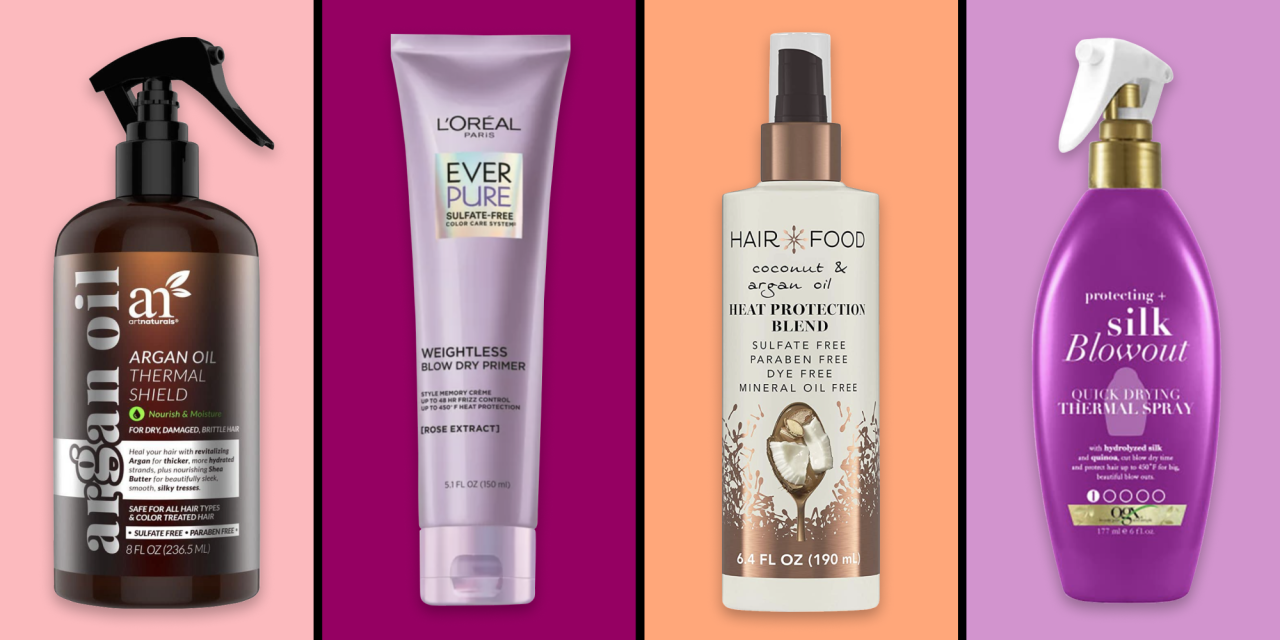Hair essence for heat protection before styling: Think of your hair as a glamorous diva about to hit the red carpet. She needs her prep! Before the blow-dryer’s scorching heat transforms your luscious locks into a crispy catastrophe, you need a superhero—a heat-protecting hair essence. This isn’t just some beauty product; it’s your hair’s personal bodyguard, shielding it from the fiery wrath of styling tools and keeping it looking fabulous.
We’ll delve into the science behind heat damage, explore the magical ingredients within these essences, and reveal the secrets to application techniques that’ll leave your hair thanking you (silently, of course, because hair doesn’t actually talk… yet).
We’ll uncover the mysteries of oil-based versus silicone-based essences, learn how to choose the perfect one for your hair type, and even see some before-and-after photos that will make you a believer. Get ready to unleash your inner hair stylist and say goodbye to heat-damaged hair for good!
Understanding Heat Protection for Hair
Let’s face it, we all love that sleek, bouncy, perfectly-styled hair. But our trusty heat styling tools – those miracle workers that transform our manes – can be a bit of a double-edged sword. While they create gorgeous looks, they can also wreak havoc on our hair, leading to dryness, breakage, and a whole host of other hair-raising issues.
So, before you reach for that curling iron, let’s delve into the science of heat damage and how to protect your precious locks.
Heat Damage Mechanisms
Heat styling tools work by breaking and reforming the hydrogen bonds in your hair. Excessive heat disrupts these bonds more than they can recover, leading to structural damage. Think of your hair as a delicate rope; repeated exposure to high heat weakens the strands, making them prone to breakage and split ends. The higher the temperature and the longer the exposure, the more significant the damage.
Common Heat Styling Tools and Their Impact
From the humble hairdryer to the powerful straightening iron, our arsenal of heat styling tools can be both a blessing and a curse. Let’s examine some common culprits and their potential consequences.
- Hairdryers: While convenient, excessive heat from hairdryers can lead to dryness and frizz. Using a lower heat setting and keeping the dryer moving can mitigate damage.
- Straightening Irons: These tools deliver intense heat directly to the hair shaft, potentially causing significant damage if overused or used at excessively high temperatures. Using a heat protectant is crucial here.
- Curling Irons: Similar to straightening irons, curling irons can cause breakage and dryness if used improperly or without proper heat protection.
Types of Heat Damage
| Type of Damage | Description | Visual Signs | Impact on Hair Health |
|---|---|---|---|
| Dryness | Loss of moisture, leading to brittle and fragile hair. | Dull, lackluster appearance, increased frizz. | Increased breakage, difficulty styling. |
| Breakage | Hair snapping or breaking off, often near the ends. | Visible split ends, shorter hair length. | Compromised hair strength and integrity. |
| Split Ends | The ends of the hair shaft splitting into two or more strands. | Frayed or forked ends. | Further breakage, difficult to manage. |
| Frizz | Unruly, flyaway hair due to lack of moisture and cuticle damage. | Hair appearing puffy and unkempt. | Difficult to style, dull appearance. |
The Role of Hair Essence in Heat Protection
Enter the unsung hero of heat styling: hair essence. These lightweight serums act as a shield, protecting your hair from the damaging effects of heat. But not all hair essences are created equal. Let’s explore the ingredients, mechanisms, and different types available.
Hair Essence Ingredients and Their Protective Mechanisms
Many heat protectant hair essences contain a blend of ingredients designed to create a barrier against heat damage. These often include silicones, oils, and various polymers.
- Silicones: Create a smooth coating around the hair shaft, reducing friction and heat penetration.
- Oils (e.g., argan oil, coconut oil): Moisturize and condition the hair, improving its resilience to heat.
- Polymers: Form a protective film on the hair surface, acting as a heat shield.
Types of Hair Essences

| Type | Benefits | Drawbacks | Suitable Hair Types |
|---|---|---|---|
| Oil-Based | Intense moisture, shine, and softness. | Can weigh down fine hair, may leave residue. | Thick, dry, or damaged hair. |
| Silicone-Based | Excellent heat protection, smooths frizz, adds shine. | Can build up over time, may not be suitable for all hair types. | Most hair types, especially those prone to frizz. |
| Water-Based | Lightweight, easily absorbed, suitable for all hair types. | May offer less intense heat protection than oil or silicone-based. | Fine, thin, or oily hair. |
Application Methods and Techniques: Hair Essence For Heat Protection Before Styling

Applying hair essence correctly is crucial for maximizing its protective benefits. The method may vary slightly depending on your hair type and length, but the general principles remain the same.
Step-by-Step Application
- Start with towel-dried hair. Don’t apply to soaking wet hair, as this will dilute the essence.
- Dispense a small amount of essence into your palms.
- Rub your palms together to distribute the essence evenly.
- Apply the essence to your hair, starting from the mid-lengths and working towards the ends. Avoid the scalp unless specifically directed by the product instructions.
- Comb through your hair to ensure even distribution.
- Proceed with your heat styling.
Tips for Maximizing Effectiveness
- Use a pea-sized amount for short to medium hair, and slightly more for long or thick hair.
- Adjust the amount based on your hair’s porosity; high porosity hair may require more.
- Don’t overload your hair with essence; too much can weigh it down.
Hair Essence Ingredients and Their Effects
Understanding the key ingredients in your heat protectant hair essence will help you make informed choices. Let’s explore some common ingredients and their effects on your hair.
Key Ingredients and Their Functions, Hair essence for heat protection before styling
- Silicones (Dimethicone, Cyclomethicone): Create a protective barrier, reducing friction and heat damage. Can build up over time if not properly cleansed.
- Oils (Argan Oil, Coconut Oil, Jojoba Oil): Moisturize and condition the hair, enhancing shine and manageability. Can weigh down fine hair if overused.
- Panthenol (Provitamin B5): Hydrates and strengthens hair, improving elasticity and reducing breakage.
- Keratin: A protein that strengthens and repairs damaged hair. Helps to improve hair’s resilience to heat.
Potential Side Effects
- Silicone Buildup: Excessive use of silicone-based essences can lead to product buildup, making hair look dull and lifeless. Regular clarifying shampoos can help mitigate this.
- Allergic Reactions: Some individuals may experience allergic reactions to certain ingredients. Always patch test new products before applying them to your entire scalp and hair.
Choosing the Right Hair Essence
Selecting the right heat protectant essence depends on your hair type, styling needs, and porosity. Let’s explore some guidelines to help you navigate the world of hair essences.
Guidelines for Selection

Consider these factors when choosing a heat protectant hair essence:
- Hair Type: Fine hair needs lightweight essences, while thick or coarse hair can tolerate richer formulas.
- Styling Needs: If you frequently use high-heat styling tools, opt for an essence with strong heat protection.
- Hair Porosity: High porosity hair needs more moisturizing essences to seal in moisture and protect from heat damage.
Reading Product Labels
Pay close attention to the ingredient list. Look for key ingredients like silicones, oils, and polymers that offer heat protection. Avoid products with harsh chemicals or ingredients that may irritate your scalp.
Illustrative Examples of Heat Damaged Hair
Heat-damaged hair often presents a range of visual cues, allowing you to easily identify the problem. Understanding these signs can help you take proactive steps to protect your hair.
Visual Characteristics of Heat Damage
Heat-damaged hair typically appears dry, brittle, and lacks shine. It may be prone to breakage, split ends, and excessive frizz. The texture feels rough and lacks elasticity, often snapping easily when pulled. Healthy hair, on the other hand, possesses a smooth, shiny, and elastic texture. It retains moisture well and is less prone to breakage.
Before and After Heat Protectant Use

Before applying a heat protectant, hair might appear dull, dry, and prone to frizz. After applying a heat protectant essence, the hair generally appears smoother, shinier, and more manageable. It is less prone to breakage and frizz during heat styling. The difference is particularly noticeable when comparing the texture and elasticity of the hair before and after application.
Outcome Summary
So, there you have it! Armed with this knowledge, you can now conquer the world of heat styling with confidence, knowing your hair is safe and sound. Remember, choosing the right heat protectant essence is like finding the perfect soulmate for your hair—it’s a match made in styling heaven. Embrace the power of preparation, and let your hair shine brighter than ever before.
Now go forth and style with impunity! (But always use a heat protectant, just in case).
